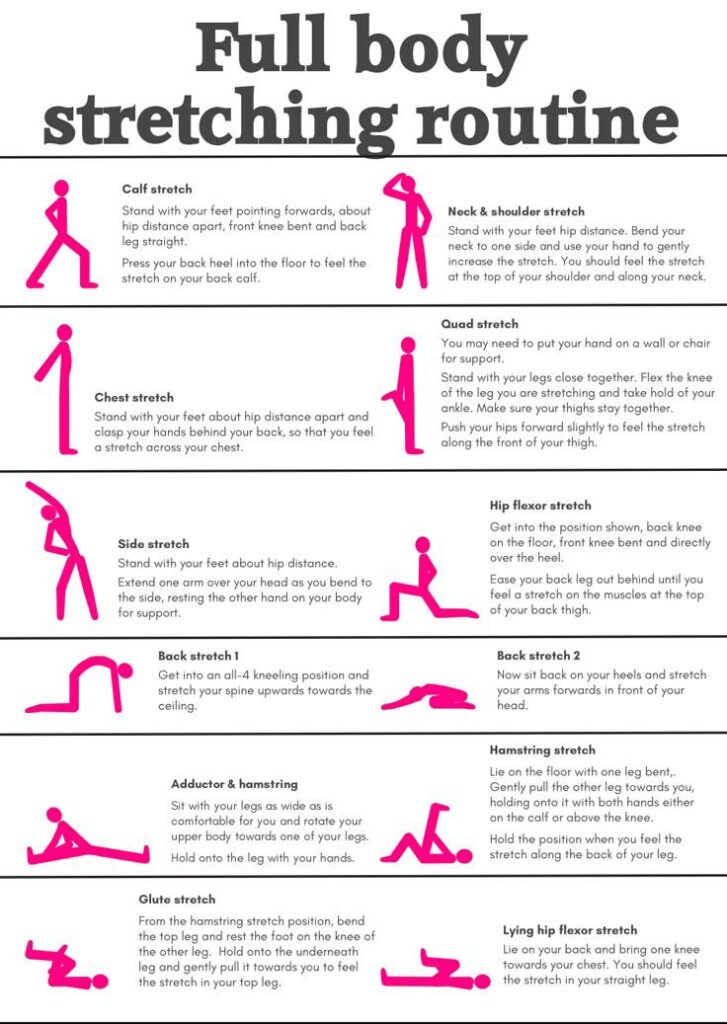Flexibility is essential for maintaining mobility, preventing injuries, and improving overall well-being. Daily stretching routines help muscles and joints stay supple, reducing stiffness and promoting better posture. This article explores the science behind flexibility, the benefits of stretching, and simple yet effective daily stretches to incorporate into your routine. Whether you’re an athlete, a desk worker, or simply looking to improve movement, these techniques will enhance your flexibility and overall health.

Understanding Flexibility and Its Importance
The Science Behind Flexibility
Flexibility refers to the ability of muscles and joints to move through their full range of motion. It plays a crucial role in overall health, aiding mobility, reducing stiffness, and preventing injuries. When muscles become tight, they can restrict movement and lead to discomfort or imbalances in the body.
Benefits of Improved Flexibility
Stretching daily enhances circulation, promotes relaxation, and improves posture. It also helps reduce stress, allowing muscles to recover more effectively. Athletes, seniors, and individuals with sedentary lifestyles benefit significantly from increased flexibility.
The Role of Stretching in Flexibility
Dynamic vs. Static Stretching
Dynamic stretching involves controlled, gentle movements that prepare muscles for activity. These stretches are beneficial before workouts. On the other hand, static stretching requires holding a position for a set duration, helping muscles lengthen and relax.
The Impact of Stretching on Muscles
Stretching stimulates the production of synovial fluid, which lubricates joints. It also increases blood flow, delivering oxygen and nutrients to muscle tissues. Over time, consistent stretching improves muscle elasticity and range of motion.
Essential Daily Stretches for Better Flexibility
Upper Body Stretches
Shoulder Stretch
Sitting for long hours can lead to shoulder tension. Therefore, to alleviate stiffness, stretch your shoulders by pulling one arm across your chest and holding it with the opposite hand.
Neck Stretch
Tension in the neck often results from poor posture. Gently tilting your head from side to side stretches the neck muscles and relieves tightness.
Lower Body Stretches
Hamstring Stretch
Tight hamstrings can cause lower back pain. To counter this, sit on the floor with one leg extended and the other bent, then reach toward your toes to stretch the back of your thighs.
Quadriceps Stretch
Standing on one foot, pull the opposite leg’s ankle toward your glutes. This stretch targets the front thigh muscles and improves knee flexibility.
Core and Back Stretches
Cat-Cow Stretch
This yoga-inspired movement enhances spinal flexibility. Additionally, alternating between arching and rounding your back relieves tension and promotes better posture.
Seated Spinal Twist
Twisting movements increase spinal mobility. Sitting with legs extended, bend one knee, place the foot over the opposite leg, and gently twist your torso.
How to Incorporate Stretching into Your Routine
Remind Yourself That Stretching Is Important For Your Body
There are many stretching benefits that your body will appreciate. Some of these benefits are addressing muscle imbalances, improving your flexibility, reducing the overall stress on your muscles, helping your mind and body relax, getting your body ready for workouts and also cooling down after a workout. If you stretch before you exercise, your body will flex better and your workout will go smoother and feel better overall. Reminding yourself that being more mobile with added flexibility is a very good thing for your body and mental state.
Place Your Workout / Stretching Gear Near Daily Routines
Placing your workout gear or stretching apparatuses near where you walk by daily in your home will make your more than likely to think about stretching or exercising. This could be your foam roller, massage tool, yoga mat, or exercise ball. All of these items could be a fantastic reminder to get active and think about stretching.
Small Habits Create Big Results
Creating small habits around your daily routines creates bigger results of you acting on stretching and completing your goals. Find a few stretches that you really like doing, and then start with doing those daily to help make you feel better. Once you get on a routine with these, adding a few more will not seem like a big deal because you will feel better and your body will enjoy the additional movement.
Creating A Buddy System For Daily Habits
Stacking other habits that you do already with a stretch or exercise will help you achieve more stretching into your daily routine. For example, when you are doing something in the kitchen that requires you to wait, you can add some standing leg stretches, neck stretches, or arm stretches. While watching a show, add some stretching during breaks. These are just a couple of ideas, but adding a task to a daily habit that already exists helps you attain the goals that you set out to do.
Always Try To Plan Ahead
We all have things in our daily schedule we have to plan for so we will not forget. One way that can help add stretching to your routine is to plan it out. Add a reminder to your calendar on your phone or computer that can pop up during the day on repeat. When you plan ahead, you are more likely to complete the task, or at least you see the reminders on the calendar, and will think about it more often.

Common Stretching Mistakes to Avoid
Stretching Cold Muscles
Always warm up before stretching. Light movement, such as walking or jogging in place, increases muscle temperature and reduces injury risk.
Holding Your Breath
Breathing deeply enhances the effectiveness of stretches. Exhaling during movements helps muscles relax, allowing for a deeper stretch.
Bouncing During Stretches
Bouncing can cause micro-tears in muscles. Instead, hold each stretch steadily and avoid sudden movements.
Nutrition and Hydration for Flexibility
The Role of Hydration
Water supports muscle elasticity and joint lubrication. Dehydration can cause stiffness, making stretching less effective.
Nutrients That Support Flexibility
Magnesium, potassium, and omega-3 fatty acids help muscles stay supple. Similarly, foods like leafy greens, bananas, and fish contribute to muscle health.
Flexibility is the key to stability.
John Wooden
Conclusion
Incorporating simple daily stretches improves flexibility, enhances mobility, and reduces discomfort. A consistent routine, combined with proper hydration and nutrition, leads to long-term benefits. Prioritizing flexibility keeps muscles and joints healthy, ensuring better movement and well-being.
